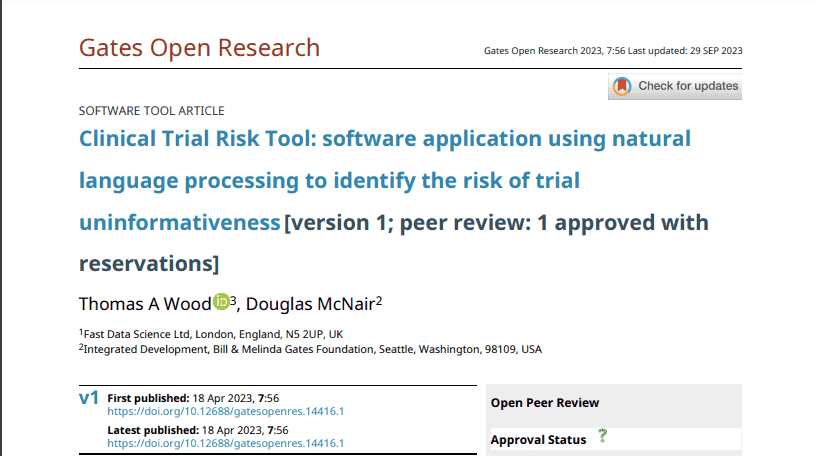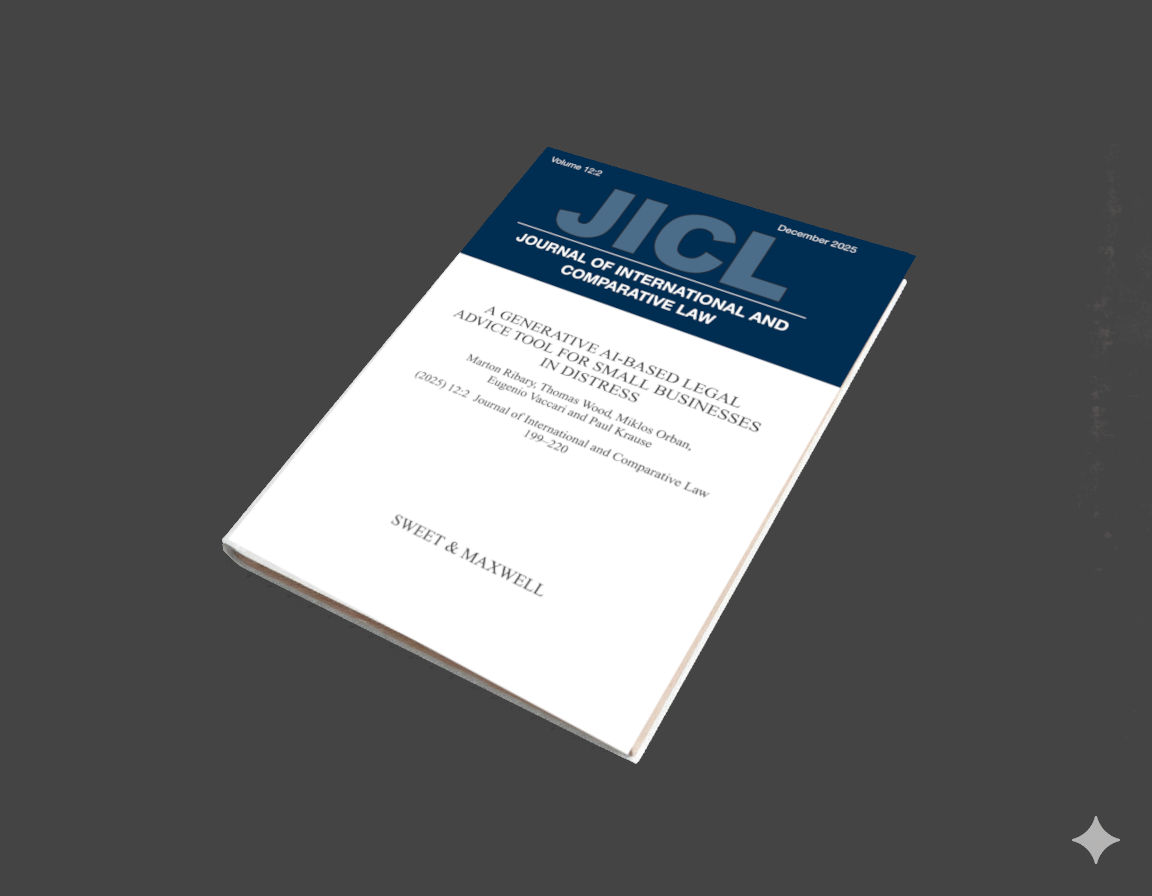
Clinical trials are the backbone of medical progress, but a worrying trend is emerging: a large portion end without delivering useful results. This “uninformativeness” wastes valuable resources and delays advancements.
Fast Data Science is excited to announce the publication of a technical research paper the Clinical Trial Risk Tool, a game-changer in identifying potential uninformativeness at the protocol stage!
The Clinical Trial Risk Tool is a browser-based tool which uses Natural Language Processing (NLP) to analyse clinical trial protocols. Here’s how it works:
Ready to fight uninformativeness? Head over to https://clinicaltrialrisk.org/tool and access this free, open-source software.
A BibTex citation is as follows:
@article{wood2023clinical,
title={Clinical Trial Risk Tool: software application using natural language processing to identify the risk of trial uninformativeness},
author={Wood, Thomas A and McNair, Douglas},
journal={Gates Open Research},
volume={7},
number={56},
pages={56},
year={2023},
publisher={F1000 Research Limited}
}
Read more about research in AI and Fast Data Science’s publications here
Unleash the potential of your NLP projects with the right talent. Post your job with us and attract candidates who are as passionate about natural language processing.
Hire NLP Experts
How can you predict customer churn using machine learning and AI? In an earlier blog post, I introduced the concept of customer churn. Here, I’d like to dive into customer churn prediction in more detail and show how we can easily and simply use AI to predict customer churn.

A generative AI-based legal advice tool for small businesses in distress We are pleased to announce the publication of our paper A generative AI-based legal advice tool for small businesses in distress, in collaboration with an interdisciplinary team based in the UK and Hungary.

Thomas Wood presents the Clinical Trial Risk Tool before the November meeting of the Clinical AI Interest Group at Alan Turing Institute The Clinical AI Interest group is a community of health professionals from a broad range of backgrounds with an interest in Clinical AI, organised by the Alan Turing Institute.
What we can do for you